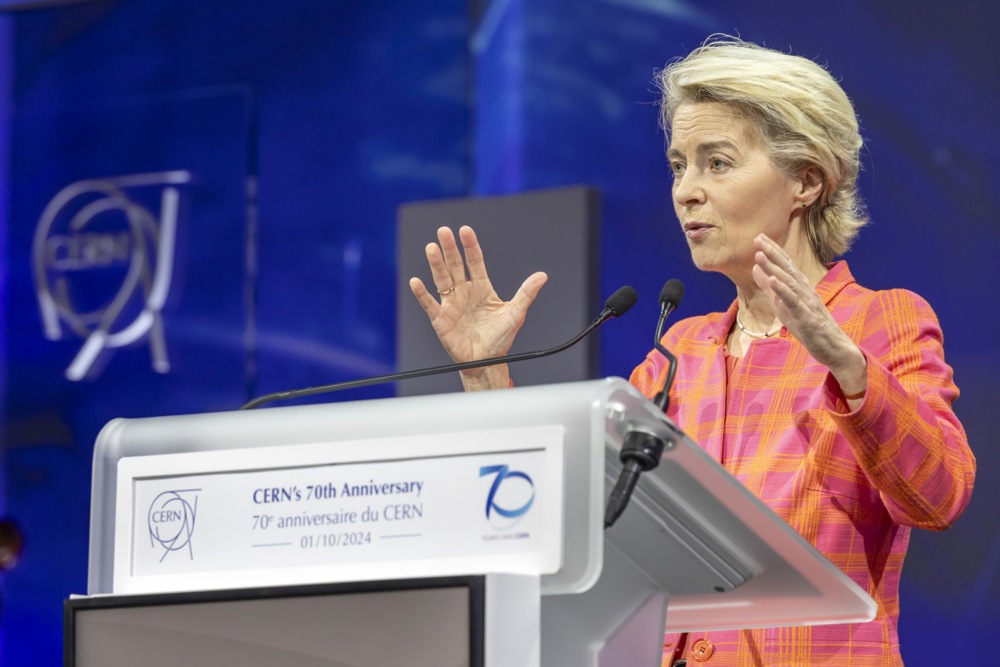Senior researchers are sounding the alarm over the increasing grip China has on the European Union’s wind energy sector.
Writing in an October 11 report, Henrik Wachtmeister, a researcher in global energy systems at Sweden’s Uppsala University and associate analyst at the National Knowledge Centre on China (NKK), warned that China’s increasing control of the sector posed a strategic threat to the long-term economic prosperity and political autonomy of Sweden and Europe.
In the report for the Swedish National China Centre, an independent research unit at the Swedish Institute of International Affairs, Wachtmeister highlighted how China’s growing dominance and ambitions in “green” technology have put Europe in a tricky situation.
He said that was partly the product of a sophisticated strategy, with Beijing expanding its power through targeted subsidies and investments in critical sectors of the economy, exemplified by initiatives such as the Go Global Strategy and the Belt and Road Initiative
This approach has resulted in Chinese state-owned companies dominating large parts of the wind industry, which it can use to wield power.
Sweden’s Markbygden Ett, Europe’s largest wind-power plant, has lost more than €322 million since its start-up and between 2017 and 2023. https://t.co/tHldcckSwI
— Brussels Signal (@brusselssignal) August 1, 2024
While Chinese state-owned companies control 10.4 per cent of Sweden’s installed wind power capacity, it provides 70 to 80 per cent of many key components globally and undertakes almost 100 per cent of the refining of key rare-earth elements, the report read.
Despite the European Union’s much-vaunted Green Deal and huge spending in the bloc — and despite geopolitical ramifications on energy and climate change — China is leading the way in green energy.
In 2023, of the top five wind turbine manufacturers in the world in terms of commissioned capacity, four were Chinese.
In 2022, Chinese manufacturers accounted for 66 per cent of global orders, while Western manufacturers accounted for 22 per cent. Chinese turbines are reportedly between 20 per cent and 25 per cent cheaper than their Western competitors.
Conversely, the reliability of Chinese turbines is said to be lower than desired, which is connected to technical issues as well as poor service provision.
Siemens Energy could cut more than 4,000 jobs across Europe as falling demand and other economic problems take their toll on the wind industry. https://t.co/qOnEJXxC5g
— Brussels Signal (@brusselssignal) June 3, 2024
China’s dominance could give the Communist country a large sway over Europe, giving Beijing the ability to cut the electricity supply and manipulate the market when it wants to.
In addition, the dominance could give it the ability to access sensitive information, impose one-sided export restrictions, sabotage IT systems and wield indirect economic and political influence, the report warned.
Wachtmeister did say he considered the risks associated with Chinese ownership of companies — typically the most scrutinised issue — and the potential for electricity supply cuts or price manipulation to be relatively low, given China’s limited market influence and the high costs involved.
He expressed more concern regarding Europe’s supply-chain dependency on China.
“These [dependencies] could be used to limit the availability of spare parts or components for new turbines and could be employed across a continuum, ranging from subtly skewing competition to complete export bans targeted at individual countries or Europe as a whole”, the report read.
“Viewed in isolation, Chinese leadership in wind technology, manufacturing and ownership is probably manageable.”
The expert added that as more and more sectors become “dominated by Chinese companies, it contributes to the overarching strategic threat to Sweden’s and Europe’s long-term economic prosperity and political autonomy”.
Writing on possible solutions, Wachtmeister said that policymakers should adopt a more nuanced approach to dealing with China.
He pointed at the EU’s decision to de-risk from China, citing how the bloc’s Net-Zero Industry Act, Raw Materials Act and Foreign Direct Investment Regulation push to distance the union from Beijing — although he added that the success of these projects regarding China de-risking hinged on their successful implementation.
He added that Sweden could intensify its efforts to reduce risks by further limiting Chinese ownership and addressing vulnerabilities in supply chains.
Furthermore, Wachtmeister said policies could focus on mitigating risks such as “hostile” electricity supply cuts, restricting access to sensitive power system data, enforcing strong IT security standards and raising awareness of indirect political and economic influence.
“Becoming a world leader in green technology is one of China’s key strategic objectives”, the researcher noted. “Chinese companies have already attained leadership positions in solar power, batteries and electric vehicles, and are rapidly advancing towards dominance in wind energy as well.”
Many Swedish wind farms are in large part owned by the China General Nuclear Power Corporation (CGN), formerly known as China Guangdong Nuclear Power Corporation.
The company’s overarching vision is to “build a world-class clean energy group with global competitiveness”, including in the nuclear sector.
Despite that, in 2019 the US put CGN on its export blacklist due to allegations it had stolen US nuclear technology for military use.
Wachtmeister warned that indicated how Chinese state-owned companies could be used for information transfer and also pose an increased risk of becoming involved in trade disputes.
“Continuous monitoring and adaptation to evolving relations with China will be necessary, including reappraisal and rebalancing of the risks and benefits discussed above,” he concluded.
Rather than being an independent green innovator, Northvolt uses old Chinese technology, with 20-year-old equipment that was already out of date when put in place. https://t.co/oCI3Guhuj5
— Brussels Signal (@brusselssignal) October 9, 2024





